Shiva and Apollo
In Vedic literature, one of the most frequent names of Rudra is शर्व (“archer”). Yajurveda 4.5 (Taittiriya Samhita) is popularly known as Shri Rudram or Śatarudrīya. Its fifth Anuvaka starts with नमोभवाय च रुद्राय च नमः शर्वाय च पशुपतयेच
Infact, the Śatarudrīya starts with:
नमस्तेरुद्रमन्यव उतोत इषवेनमः । नमस्ते अस्तुधन्वनेबाहुभ्यामुततेनमः ॥
“Veneration to your wrath, O Rudra. Veneration to your arrow as well; Veneration to your bow and veneration to your arms” (Yajurveda 4.5.1.1).
The bow of Rudra was पिनाक. In fact, in the entire Vedic literature, triśūla is not mentioned anywhere as the weapon of Rudra-Śiva. This is only mentioned in Post Vedic literature(Epic and Puranic)
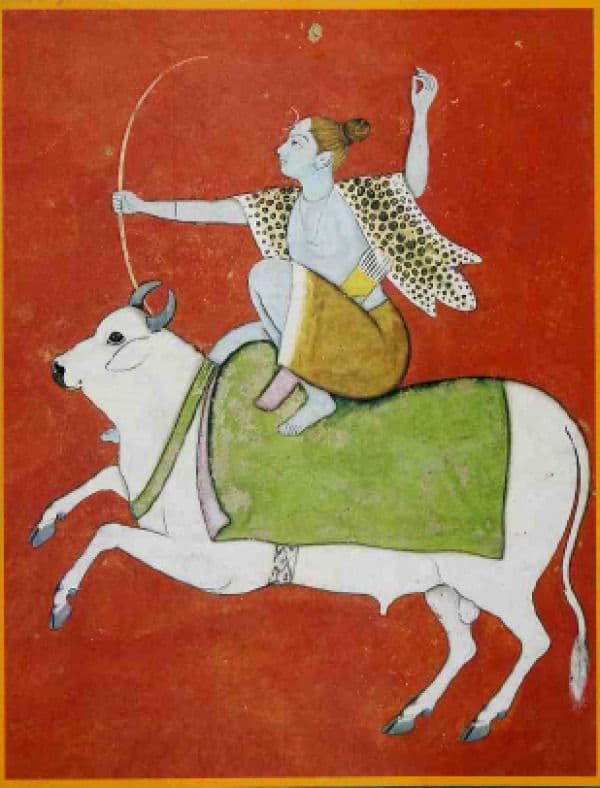
God Apollo is renowned in Ancient Greek literature as “The Archer”. In Illiad (c. 800 BC), The most frequent phrase used by Homer to describe Apollo is “Apollo who shoots from afar”. The Homeric hymn to Apollo starts with
“I will remember and not forget Apollo who shoots from afar.” (source)
“Apollo who kills from afar”- Euripedes. This phrase has a parallel in Śatarudrīya which describes Rudra as दूरेवधाय (he who shoots/kills from afar).
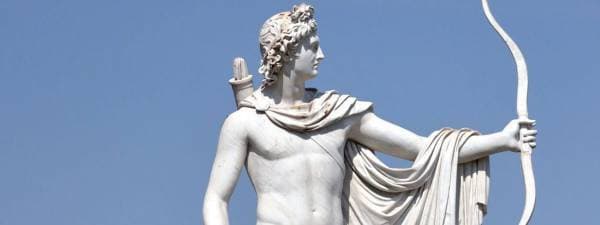
In Illiad, Homer describes Apollo as παιών (“healer”). In later Greek literature, “divine healer” is the most common epithet for Apollo. Before the advent of Christianity. The Greek physicians ritually worshiped Apollo before commencing their craft. In fact, one of the names of Apollo is ἰατρός/iatros (“doctor”). This term is now found as the suffix “-iatry” in several medical terms. Pediatry,Psychiatry,holiatry, chemiatry, hippiatry etc.
Again, a parallel can be found in the Śatarudrīya. In the very first Anuvaka, Rudra is defined as Daivyobhishak(“divine healer”). Ayurvedic doctors traditionally began their craft by praying to Rudra. This is why Rudra-Śiva is called “Vaidyanath” (“Lord of doctors”).
Apollo was considered the God of Music and Dance. Before the advent of Christianity, the Greek Pagan Musicians and Dancers worshiped Apollo as their patron deity. Apollo is frequently shown dancing with Muses (who are minor Greek goddesses personifying arts)
The Greeks frequently depicted Apollo as Apollo Didymeus. In this form, Apollo was depicted as half male & half female, encompassing both masculine & feminine forms of reality. There was a large temple dedicated to Apollo Didymeus at Miletus (Anatolia).
The Ardhanārīśvara form of Rudra-Siva is quite well known in India and the earliest representations date back to the Kushan age.
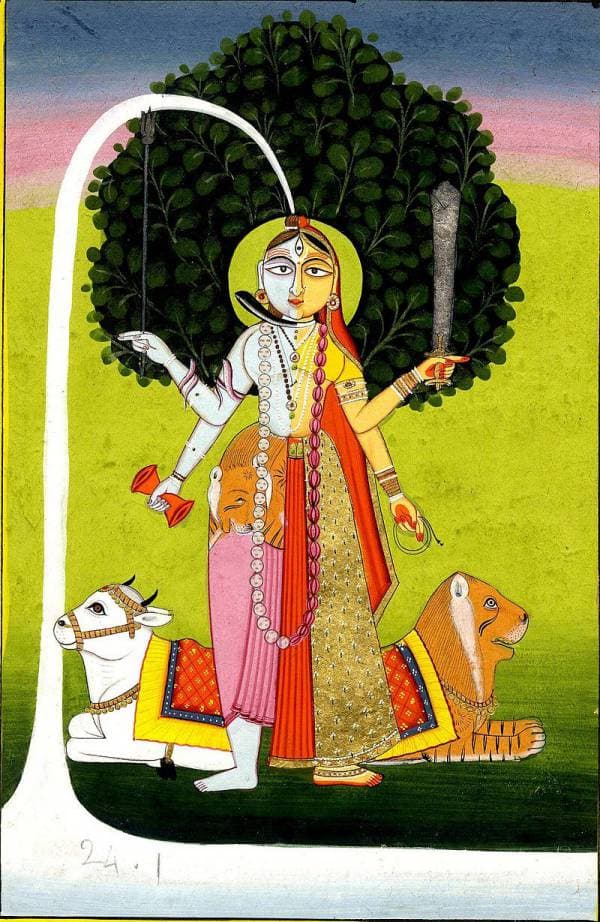
Apollo was considered the God of Music and Dance. Before the advent of Christianity, the Greek Pagan Musicians and Dancers worshiped Apollo as their patron deity. Apollo is frequently shown dancing with Muses (who are minor Greek goddesses personifying arts). In fact, the Homeric hymn to Apollo opens with a scene of Apollo singing and dancing at Mount Olympus. This Ballet of the Greek age is in fact the originator of the modern western Ballet. The modern American Ballet had the theme of Dancing Apollo and his muses as its subject and takes its name from Apollo: Apollon musagète
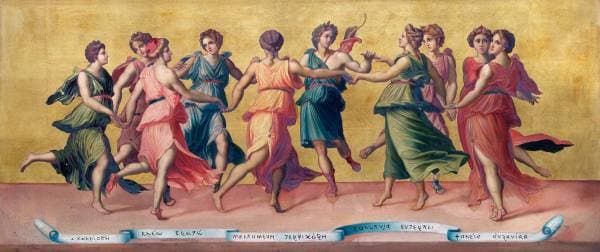
Likewise, Rudra-Shiva is well known in India as Nataraja: “The king of dance”.
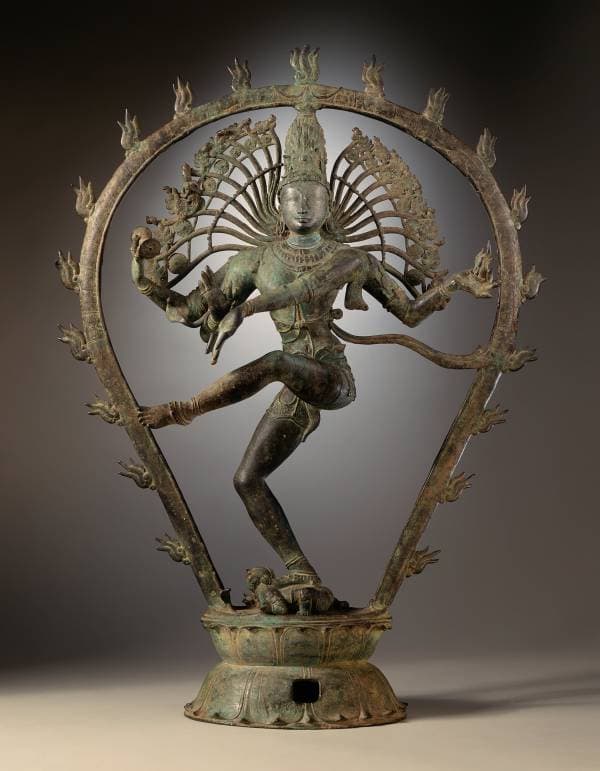
Apollo is known as the protector of animals, cattle, herds, and shepherds. One of his epithets is Νυμφηγέτης. He is also known as ζοοποσισ(“Lord of animals”). From Zoo=animals+ Posis=protector/Lord.
Rudra is called ‘Pashupati’ which literally means “Lord/Protector of animals”. In the Śatarudrīya, Rudra is thrice addressed as “Pashupati”.
In Anuvaka 2: नमो॑ वृ॒क्षेभ्यो॒ हरि॑केशेभ्यः पशू॒नां पत॑ये॒ नमो॒ (Yajurveda 4.5.2.2)
Anuvaka 5: नमो॑ भ॒वाय॑ च रु॒द्राय॑ च॒ नमः॑ श॒र्वाय॑ च पशु॒पत॑ये च॒ (4.5.5.2)
Anuvaka 8: नमः॑ शं॒गाय॑ च पशु॒पत॑ये च॒(4.5.8.2)
In Greek art, both Apollo and his twin Artemis are frequently shown holding a deer in their hands.
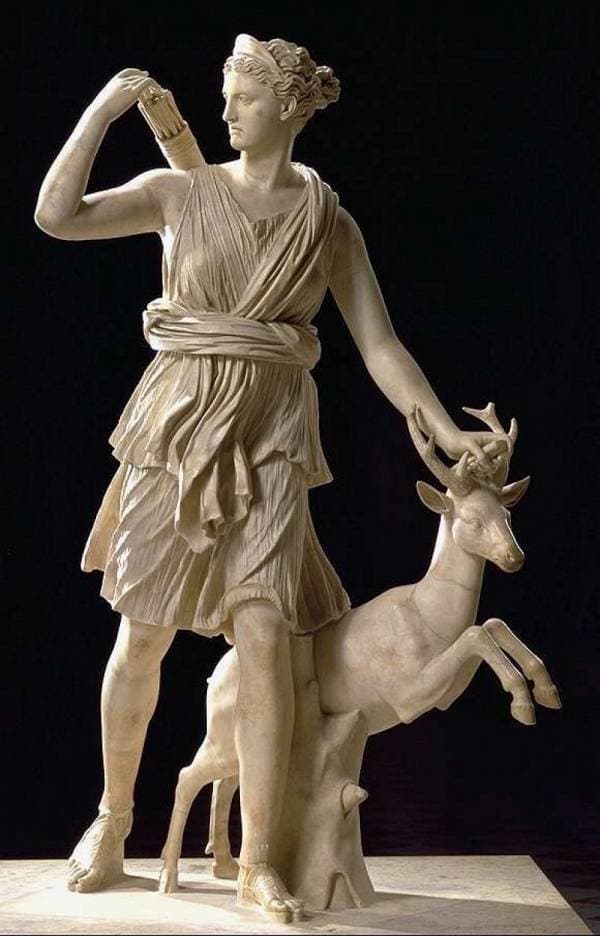
At Gudimallam, in what could be one of the earliest known Anthropomorphic representations of Shiva, he is showing holding a deer in his right hand. It is dated to the 3rd-2nd century BC & is considered by many historians as “one of the earliest surviving & unequivocal images of Shiva”.
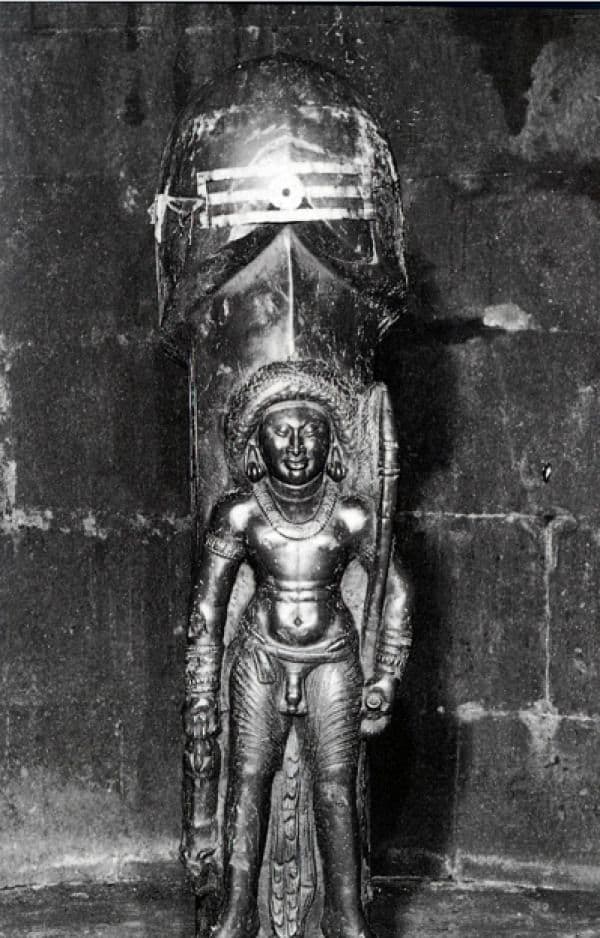
In his Bhikṣāṭanamūrti form, he is showing holding the deer with his fingers. Sometimes, the deer’s head just points towards his finger. Even in many of the Utsavamurtis of Shiva, he is shown holding the deer with his fingers.
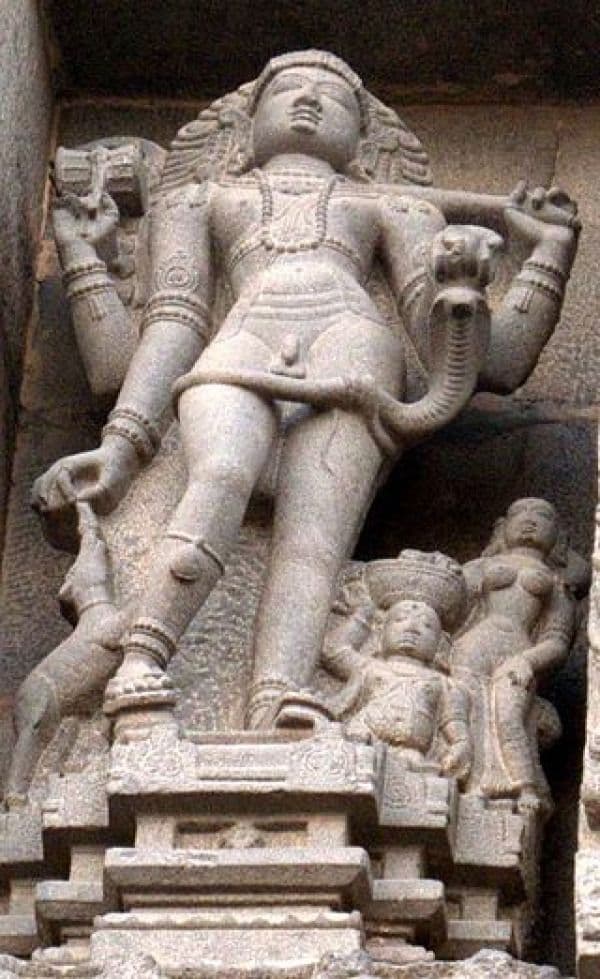
Yes, there are many. But most of these differences spring from later, post-Homeric times. Greek society has made innovations and the sect of Apollo kept changing with time, associating Apollo with attributes not originally found.
Perhaps a deity similar to an early Vedic form of Rudra was indeed worshiped in Ancient Pre Homeric Greece. However, his worship was later mixed with many local Greek beliefs and customs. With time, the deity grew apart and developed into classical Apollo. The goal is not to compare Rudra and Apollo. It points out certain similarities just to explore how extensive the geographic horizon of Rudra worship and Sanatana Dharma was in the past.
Source: https://twitter.com/BharadwajSpeaks/status/1464473878151909380